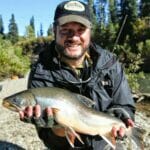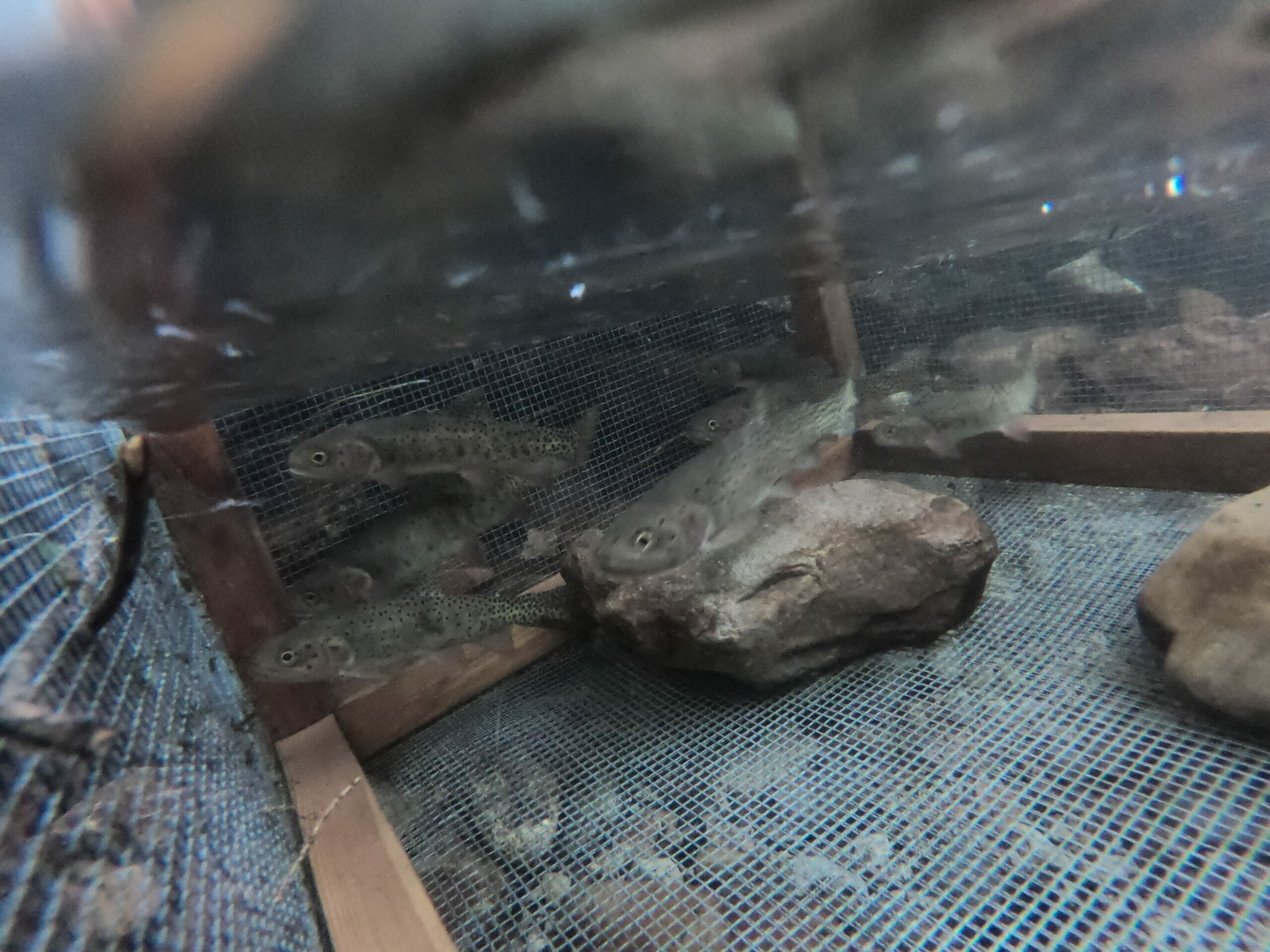Bonneville cutthroat trout wait in Snake Creek before being loaded on horses and mules for a ride to Johnson Lake. Brett Prettyman photo.
Biologists ask riders to move trout to sanctuary in Great Basin National Park
Editor’s note: Our “American Places” series highlights lands and waters that make this nation unique. These places are near and dear to many and worthy of sharing in hopes of creating more advocates for the treasures so many Americans cherish.
Like passengers waiting to board a plane, the cutthroat trout impatiently swam in the staging area for the next step on their journey.
Horses shook their bodies to get things better situated as saddles and packs were hoisted upon their backs. Riders and biologists checked, and then checked again, to make sure everything was ready for the 4-mile and 2,610-foot climb to Johnson Lake.
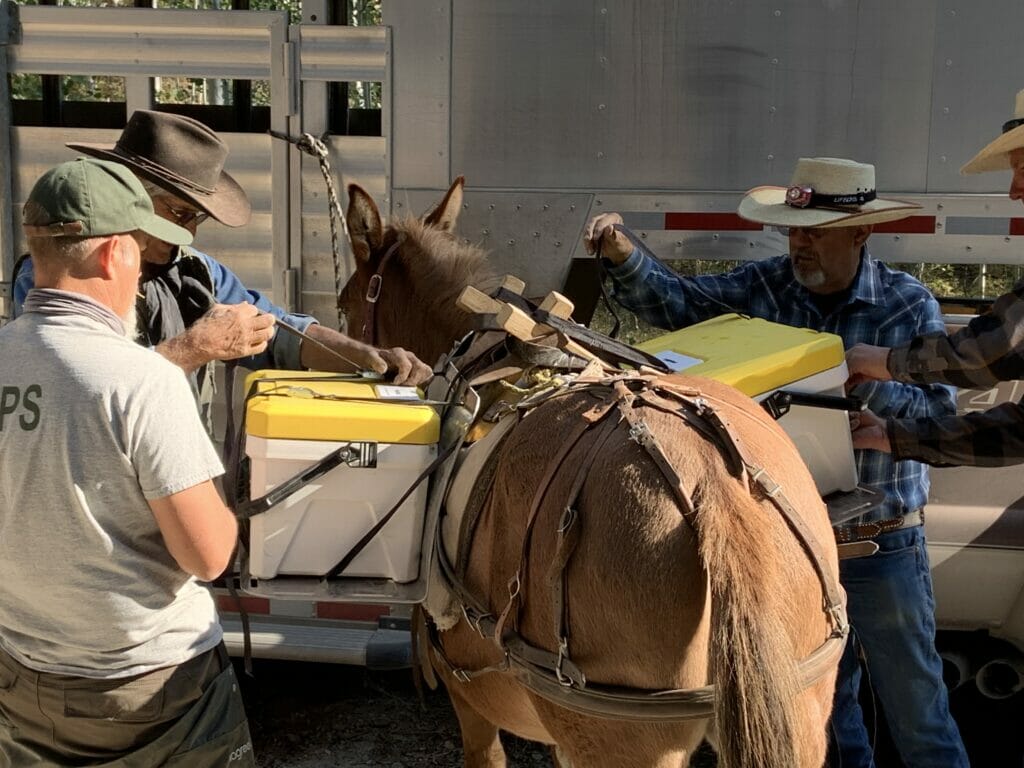
Members of Backcountry Horseman of Nevada had gathered in this national park in eastern Nevada in the fall of 2020 — they volunteered to deliver native Bonneville cutthroat trout to a new home high in the Snake Mountain Range.
National Park Service biologists hope the cutthroat trout will find suitable habitat to serve as a refuge from the ever-increasing threat of wildfires, drought, lethally high water temperatures and other impacts of a warming planet.
“This is part of a larger project where we are trying to increase the number of conservation populations of Bonneville cutthroat trout. We have increased the overall resilience of these fish in the face of global climate change,” said Jonathan Reynolds, a fisheries biologist at Great Basin National Park. “And this lake is within the native range of Bonneville cutthroat trout.”
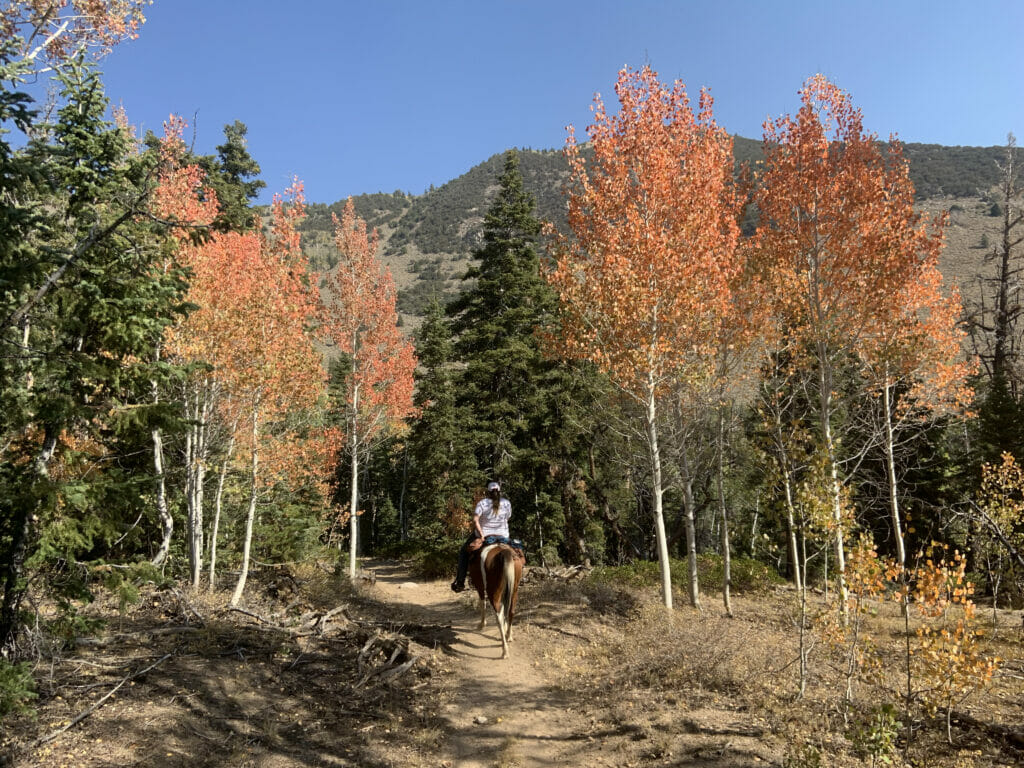
After months if not years of planning, the on-the-ground part of the project started the day before, when biologists from Great Basin National Park worked with staff from the Nevada Department of Wildlife to catch cutthroats from from Hendry Creek, about a 20-minute drive outside of the park’s boundaries.
The fish were moved to the national park and placed in pens in Snake Creek, near the Johnson Lake Trailhead for an overnight stay. Riders and biologists showed up the next morning to prepare the horses, mules and the trout for their high-country adventure.
With saddles cinched and panniers strapped snugly, park biologists rounded up the native fish and placed them in coolers with aerators. The coolers were then placed on the pack animals, and it was time to mount up.
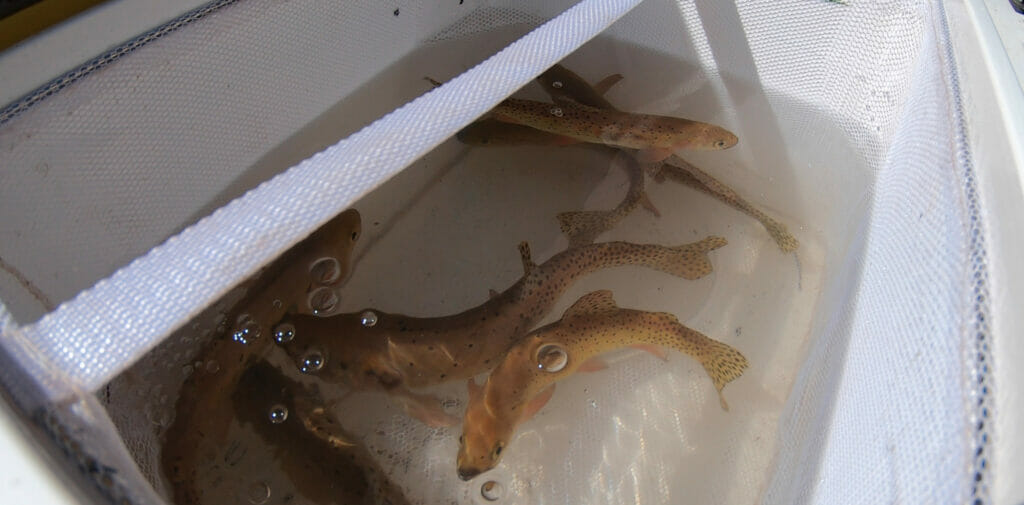
“We are really excited to be able to help with this important project to protect cutthroat trout in a place we all love,” said Danny Riddle, who coordinated the effort for Backcountry Horsemen of Nevada. “All the land managers and people we meet along the trails seem to appreciate bringing the fish in on horseback. It just has the character of wilderness. It’s good for the environment and it’s a fun thing to do.”
Nine volunteers, nine horses, three pack mules and 55 Bonneville cutthroat trout hit the trail, winding through the red and gold aspens of fall and past historic mining structures on the way to a new home for the trout.
Reynolds and other biologists left on foot before the horses and were waiting about three-quarters of the way up for the caravan to arrive. A quick check on the fish showed the aerators were working well. Cold water from a nearby spring was added to the coolers to keep the fish comfortable for the rest of the trip.
The trail turned steep and rocky after leaving the spring, slowing the group down for safety’s sake, but the horses and mules did their jobs. Soon, Johnson Lake came into sight through the pines.

“This is a great place to be a Bonneville, I think,” said volunteer Kimberly Satterthwaite while helping unload the coolers and carry the fish across a meadow to the lake.
Water from the lake was poured into the coolers to let the fish acclimate. Eventually the cutthroat trout — ranging roughly from 4 to 13 inches long — were released into the lake. With them rests the possibility of not only a recreational opportunity for anglers seeking high-country adventure, but also ensuring unique populations of Bonneville cutthroat trout from the western edge of the Great Basin are not lost entirely.
“This is the part of the park that gets the most precipitation and likely won’t be affected as much by drought,” Reynolds said. “Vegetation is a little more sparse here and we don’t usually see catastrophic wildfires at this elevation. In areas where those fires might wipe out a population, we could hopefully repopulate the creeks with fish from this population.”
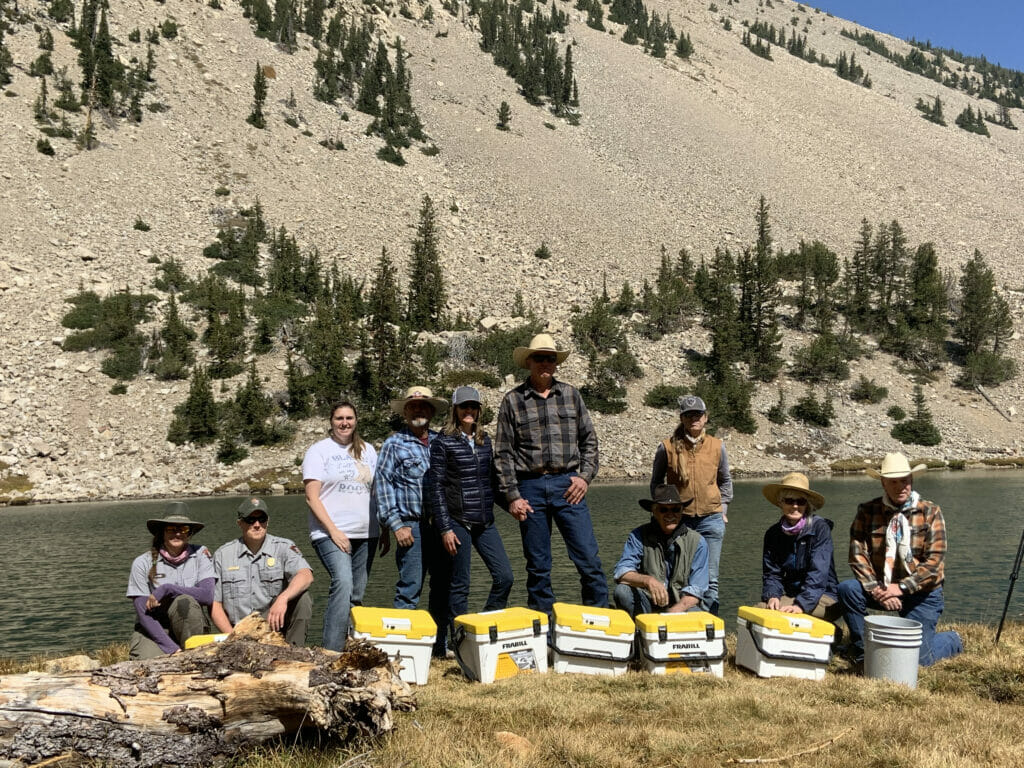
Park officials hauled gravel from Snake Creek to Johnson Lake to augment a channel that flows from a spring to encourage the cutthroats spawn in the spring. Ideally, they explained, natural recruitment would eventually populate the lake.
“To see them swim away gives me a feeling of accomplishment,” said Riddle, who joked he may come back and try to catch some of the fish on a fly rod. “Usually, we bring in fingerling fish and they just hide in the grass near the bank. This time we had wild and larger fish and they swam right for the deeper water.”
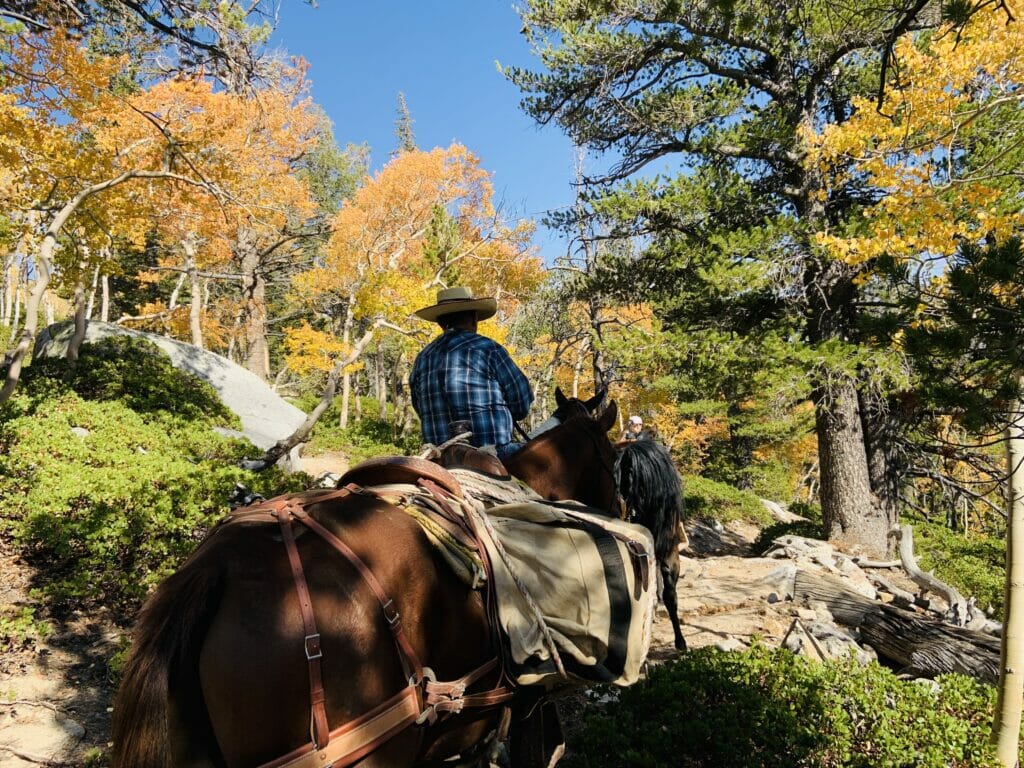
While he may not make it back to Johnson Lake anytime soon, his volunteer group has committed to helping Great Basin National Park with fish work over three years.
This fall, Riddle and the others will return to Great Basin to help national park staff haul equipment to Baker Lake, another high-mountain lake, to remove nonnative fish and prepare another sanctuary for the native cutthroats. In 2022, the plan is to haul another batch of Bonneville cutthroat trout to Baker Lake to create another conservation population.
“We were fortunate enough that the Backcountry Horsemen volunteered to move the fish and equipment for us,” Reynolds said. “They seemed like they had a good time and it made it a lot easier on us because we would have been carrying them on our backs. It would have taken us a lot longer and it might have been more risky to the fish.”
Brett Prettyman is a communications director for Trout Unlimited.


